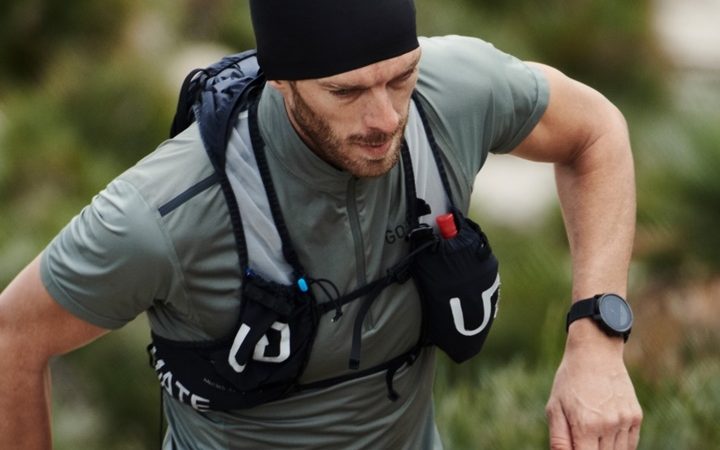Do Smartwatches Accurately Track Calories?
It’s been a long while since fitness trackers were considered innovative apps. Now, almost all smartwatches ship with a pre-installed app that tracks your steps and calories. The question that remains is how well do smartwatches track calories? If you find someone at the gym who is wearing the same smartwatch as you and perform the same type of exercises, you will find out that the results are not similar. This is thanks to the fact that smartwatches do not actually track each calorie burned. Instead, they provide an estimate based on a couple of factors such as your age, workout regiment, and more.
Back in 2019, a study performed on 18 senior citizens proved that smartwatches do not accurately track calories. The study followed 18 senior citizens who took a stroll on treadmills while wearing the same smartwatch brand. Even though you would think that the smartwatches displayed the same results at the end of the treadmill jog, this is not what happened. The smartwatch’s fitness tracker was not able to get an accurate step count because the senior citizens did move in the same way. Some were slower, while others moved faster.
We should keep in mind that commercial smartwatches do much more than only count calories. They also track sleep patterns, measure the heart rate and the number of calories burned. Even though the results are estimative, insurance companies and fitness groups still take them into account. Today we will check out how the system behind calorie counting works so that you know exactly how accurately smartwatches track calories.
Contents
How Do Smartwatches Track Calories?
Most wearable devices are equipped with proprietary algorithms that calculate multiple factors to provide an accurate calorie burned reading. The most important factors are movement (steps counting) and heart rate. However, some devices also allow users to add information about their sex, weight, age, and height that will help the smartwatch be more accurate. The wearable device will essentially take all this information from the sensors and place it in an algorithm that calculates an estimated number of calories burned. Thanks to this system, the results may vary depending on the device that you use.
While most smartwatch manufacturers do not go into too much detail to help us understand their algorithm, Fitbit did break the silence and revealed an explanation behind how its software functions. Fitbit will use personal data such as your age, gender, height, and weight to create an estimative basal metabolic rate (BMR). Doing this will help the Fitbit device figure out half of the calories that you will burn in an entire day. This is why some smartwatches will display burned calories when resting or sleeping.
After determining your BMR, the accelerometer and activity will come into play. For example, the device will automatically calculate your BMR with the data from the accelerometer and the activity that you add (exercises). This is the layman’s terms explanation behind how smartwatches track calories. However, things get a bit trickier when we are talking about devices that are dedicated to fitness because they come with dedicated software and features.
There are lots of fitness devices that sell for a higher price because they are equipped with special apps that help them provide more accurate calories burned reading. What makes these devices special is that they also calculate data such as your workout type, baseline fitness level, muscle mass, the group of muscles you are using, weights, and even resistance bands. As you can imagine, feeding all this information to the algorithm will help it provide the most accurate readings possible. However, there is a downside. Users still need to input all the data manually, and this means that after you add a new set of weights, you are required to add the information, which can be annoying at times.
How do Smartwatches Count Steps?
Do you enjoy hitting the 10,000 steps goal every day? Or are you worried that you can’t trust the steps counter? Just like it is the case with calorie tracking, the readings provided by your smartwatches are not 100% accurate. A device will track the movements of the body on a 3-axis accelerometer. The device will monitor the data 24/7, and this will help it determine if you are walking, running, or standing. The data is then shared with the proprietary algorithm, which helps it determine the movements you are making.
How to Improve the Accuracy of Your Smartwatch
If you are not happy with your smartwatch’s accuracy, you should be pleased to know that there is something you can do about it. You can find a better position for the device or tweak the settings to help it be more accurate. Nonetheless, here are our tips and tricks to help you improve the accuracy of your smartwatch:
- Don’t wear your smartwatch on your dominant wrist.
This might come as a surprise to most of you, but it’s always better if you don’t wear your smartwatch on your dominant wrist. The reason behind this is that since you are using the dominant hand for most things, the device will record it as a movement.
- Find the best placement.
Another important thing that you can do to receive accurate readings is to find the best placement for the smartwatch on your wrist. You need to wear the device firmly in a place where it will not move every other minute. The device will have a difficult time tracking your activity if it keeps moving away from your wrist.
- Add your private information.
As previously mentioned, some smartwatches are equipped with advanced software that will provide better readings if they have access to your private information. We are talking about information such as gender, height, weight, age, and so on. It’s also best to manually add the exercises you are doing when going to the gym or during a home workout. Therefore, you can rest assured knowing that your smartwatch is providing the best readings possible.




